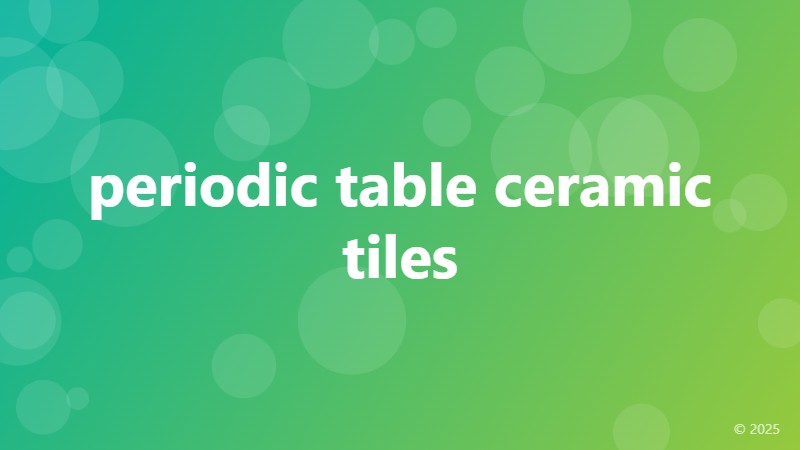periodic table ceramic tiles

Unlocking the Secrets of the Periodic Table with Ceramic Tiles
The periodic table is a fundamental concept in chemistry, displaying the elements in a logical and systematic order. While it may seem like a complex and abstract idea, it can be made more engaging and interactive with the help of ceramic tiles. In this article, we'll explore the innovative concept of periodic table ceramic tiles and how they can revolutionize the way we learn and interact with the elements.
A Visual Representation of the Elements
Traditional periodic tables are often presented in a two-dimensional format, making it difficult for students to visualize the relationships between elements. Ceramic tiles, on the other hand, offer a three-dimensional representation of the elements, allowing students to better understand the connections and patterns between them. Each tile is carefully crafted to represent a specific element, complete with its atomic number, symbol, and other relevant information.
This visual representation of the elements has been shown to improve student engagement and understanding of the periodic table. By being able to physically handle and manipulate the tiles, students can develop a deeper appreciation for the elements and their relationships. Additionally, the use of ceramic tiles can help to make the learning experience more enjoyable and interactive.
A Creative Approach to Learning
The use of periodic table ceramic tiles is not limited to traditional educational settings. They can also be used in a variety of creative and innovative ways to make learning more engaging and fun. For example, students can use the tiles to create three-dimensional models of molecules, or to design and build periodic tables of their own.
This creative approach to learning can help to foster a deeper understanding and appreciation of the elements and their relationships. By allowing students to take an active role in the learning process, periodic table ceramic tiles can help to make chemistry more accessible and enjoyable for a wider range of students.
A Beautiful and Functional Learning Tool
Periodic table ceramic tiles are not only an effective learning tool, but they are also a beautiful and functional piece of art. Each tile is carefully crafted to be visually striking, making them a great addition to any classroom or home. Additionally, the tiles are durable and long-lasting, making them a great investment for educators and learners alike.
In conclusion, periodic table ceramic tiles offer a unique and innovative way to learn and interact with the elements. By providing a visual and interactive representation of the periodic table, these tiles can help to improve student engagement and understanding of chemistry. Whether you're an educator looking for a new way to teach the periodic table, or a learner looking for a more interactive and engaging way to learn, periodic table ceramic tiles are definitely worth considering.